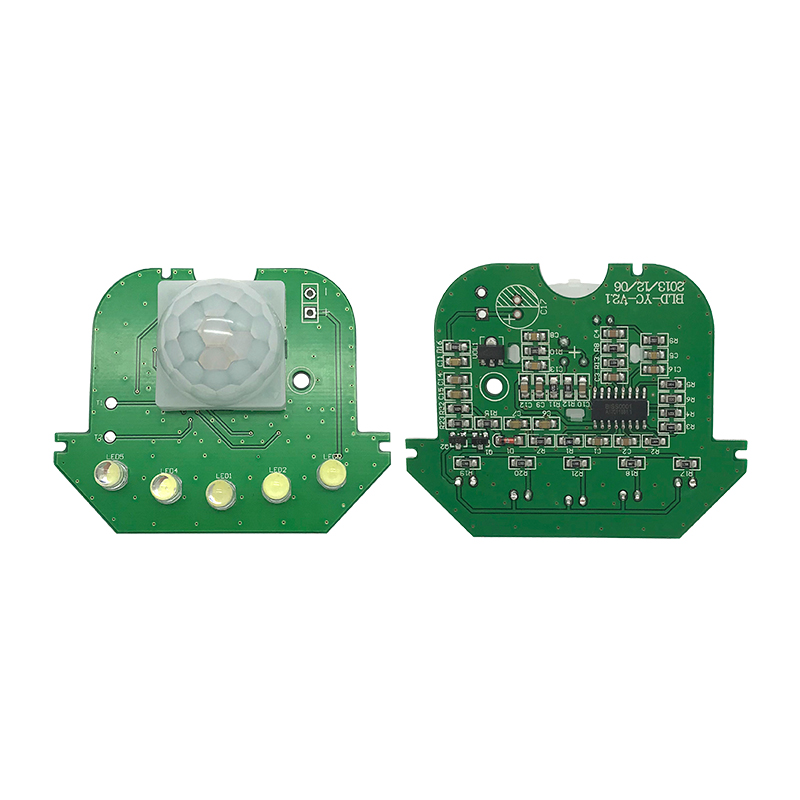 1004,West-CBD,No.139 Binhe Rd,Futian District,Shenzhen, China Post Code:518048
1004,West-CBD,No.139 Binhe Rd,Futian District,Shenzhen, China Post Code:518048
 +86-18682200597
+86-18682200597
 sales@szhaiwang.com
sales@szhaiwang.com
 1004,West-CBD,No.139 Binhe Rd,Futian District,Shenzhen, China Post Code:518048
1004,West-CBD,No.139 Binhe Rd,Futian District,Shenzhen, China Post Code:518048
 +86-18682200597
+86-18682200597
 sales@szhaiwang.com
sales@szhaiwang.com
source:Industry News release time:2022-01-07 Hits: Popular:Infrared sensing module

EE TIMES recently published an article by Mary E. Shacklett, President of Transworld Data, saying that some of the battlefield sensors used to be deployed for a few months (if not weeks) after they were out of power, and now the button battery is replaced. Before, they could provide valuable intelligence for four years. This is one of the eye-catching results of the Near-Zero Power Radio Frequency and Sensor Operation (N-ZERO) project completed by the US Department of Defense Advanced Research Projects Agency (DARPA) in May 2020.
DARPA started this program in 2015 to find a way to solve the battery life limitation of the Internet of Things, so that sensors can be deployed on the battlefield to detect vibration, light, sound or other battlefield signals without frequent replacement.
DARPA says that sensors with extended battery life are now available. These sensors only record trigger events, such as sounds, when they are awakened, or monitor battlefields or other issues on a regular basis (rather than continuously).
Now troops can gather intelligence without venturing into potential war zones. The frequency with which they enter the danger zone to replace "battery failure" sensors will be greatly reduced.
Benjamin Griffin, project manager of the DARPA Microsystems Technology Office, said: "The N-ZERO program establishes sleep_continuous alarm awareness for unplugged unattended systems triggered by specific physical or radio frequency (RF) signatures. Years of sensor lifetime will enable cost-effective and safe deployment of sensor technology in areas lacking fixed energy infrastructure."
Improvements in sensor technology are underway, and sensor capabilities may be expanded. Griffin believes that radio frequency, acoustic and infrared (IR) wake-up capabilities are the most successful induction system developed by the N-ZERO project. These near-zero power sensors send radio signals for communication (RF), measure sound levels (acoustics), and detect infrared (thermal) radiation.
Griffin explained: "What makes us most happy is the power consumption of the best-performing battery. Based on the button battery, the battery life is expected to be extended from 4 weeks to 4 years."
Despite these successes, the battery life of the sensors tested in the N-ZERO project is still limited by the processing and communication of confirmed events and the self-discharge of the battery itself.
A positive direction is the development of ultra-low power Arm processors. The Arm M0N0 processor achieves 10-nW standby power and 20-60 μW/MHz active power levels, depending on the application. Sensor power off allows users to store information in read-only memory (ROM), which can be accessed without suffering the power loss of restoring data from off-chip non-volatile memory.
Arm chips are also capable of running on a set of batteries for decades because their power consumption is very low. In contrast, a traditional button battery may have a life span of several years in sleep mode, but it will not work properly outside of this length of time.
Griffin said: "This is important because the army needs to understand the enemy's movements and changes on the battlefield. However, in the past, because sensors continue to consume power, they often spend time processing useless data. Such power consumption will shorten the battery life of the sensor. ."
DARPA said that low-power processing capabilities that can greatly extend battery life can reduce the cost of frequent replacement of sensors due to exhaustion of battery power. Safety has also been enhanced, because military personnel no longer need to travel to dangerous areas to replace on-site sensors that have failed and need to be replaced.
Read recommendations:
Smart toilet high waterproof NTC temperature sensor
Dryer special NTC temperature sensor
Popular Recommended Products
8308-D PIR lens
2021-12-27HW-MS07 microwave sensor module
2021-12-07PIR Lens 2814
2021-12-09PIR Lens 8006-2
2021-12-09Digital PIR Sensing Controller 3312-4s
2024-03-22Wide-Angle Fresnel Lens
2021-11-27PIR Lens 8309-1
2021-12-09PIR Lens 8308-7
2021-12-09PIR Lens 8605-2C
2021-12-09HW-M10-1 microwave sensor module
2021-12-07MF51 103F3950FL80 NTC Thermistor
2021-11-27Waterproof temperature sensitive NTC temperature sensor.Smart Human Body Infrared Sensor
2022-08-18Power thermistor (NTC) selection.Radar Microwave Induction Sensor Switch
2022-04-25How the thermistor works.Smart Human Body Infrared Sensor
2022-04-19Automatic vegetable fryer and NTC temperature sensor.Human Body Infrared Temperature Sensor
2023-08-26Discussion on Temperature Sensors for Measuring Temperature on the Surface of Pipe Bodies.Wide-Angle
2023-08-18Gold chip NTC thermistor
2022-08-10NTC temperature sensor's performance medium.Smart Human Body Infrared Sensor
2023-06-08NTC thermistor and inrush current
2022-04-12How to choose NTC thermistor.motion detector Vendor
2022-06-16How to splicing 12-core optical cable?Pyroelectric infrared sensor module
2022-04-22
szhaiwang4@hotmail.com
+86-18682200597
sales@szhaiwang.com